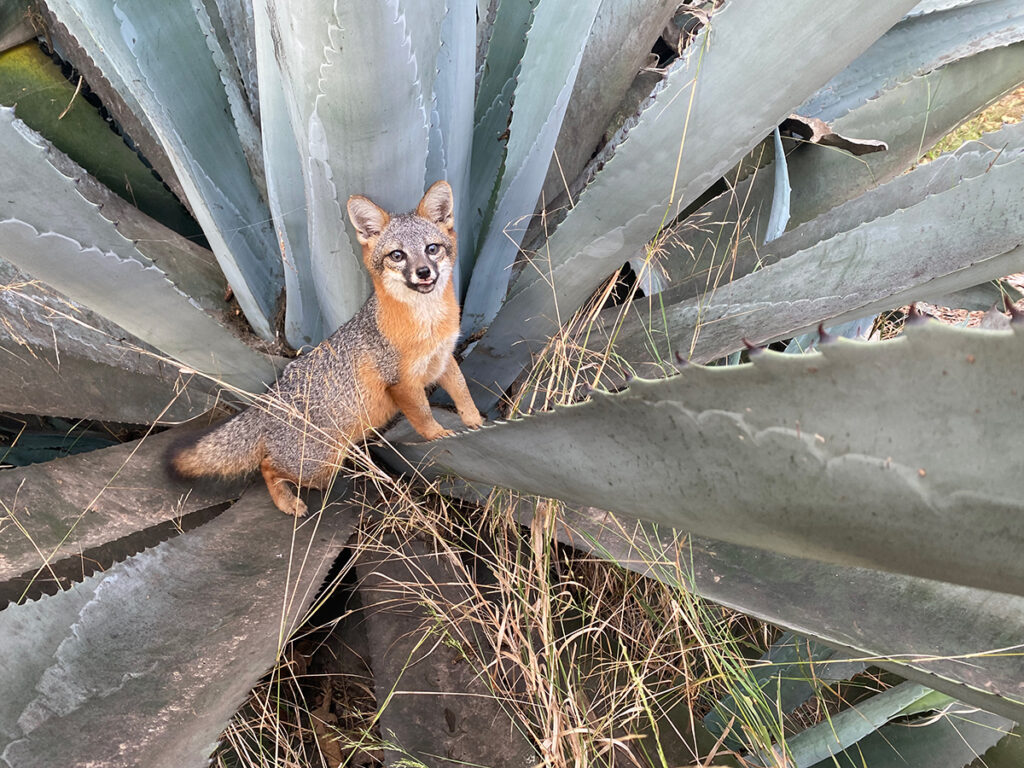
Island fox on an agave plant at Santa Cruz Island. Photo by Chuck Graham.
There was a time on Santa Cruz Island when one could go days without seeing an island fox. There was a time when you would easily see more feral pigs than the endemic Urocyon littoralis.
That was in 1999 when non-native golden eagles colonized Santa Cruz, Santa Rosa, and San Miguel Islands. Lured to the Northern Chain by the feral pig population on Santa Cruz, golden eagles quickly realized the island fox was an easier, more readily available prey source. And because island foxes had never been preyed upon, they didn’t know to look up. Before anyone knew it, golden eagles nearly wiped-out island fox populations on the three northwesterly isles.
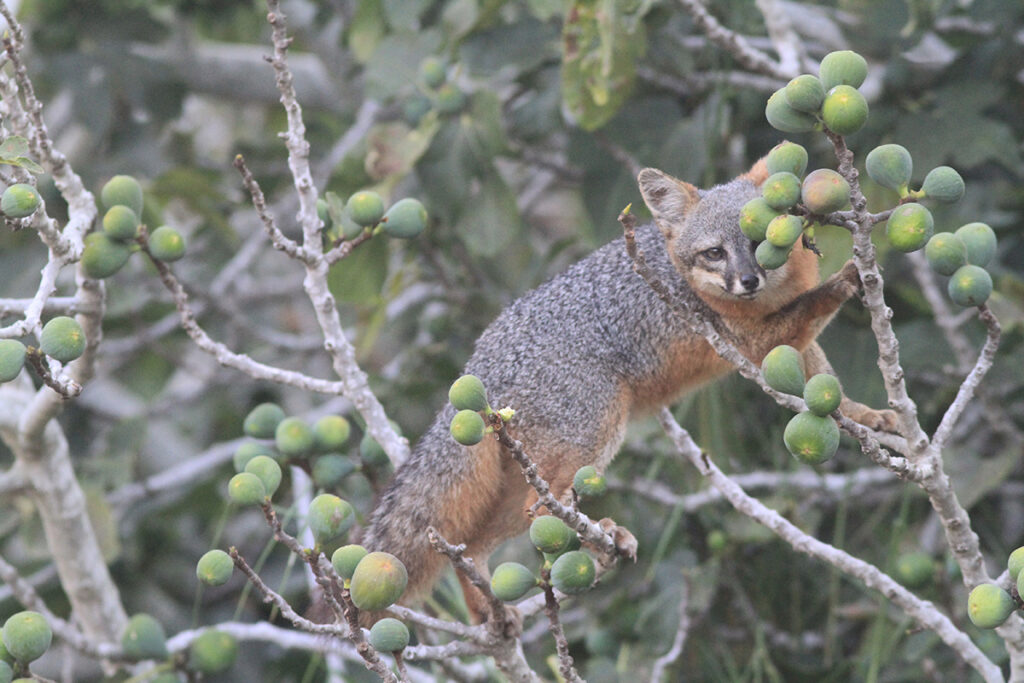
Hungry island fox climbs tree to reach sweet figs. Photo by Chuck Graham.
The island fox is a direct result of island dwarfism, where that long period of isolation and lack of food sources forced them to evolve into a smaller species. At full size, island foxes are about four pounds. They are very cat-like with semi-retractable claws. On Santa Cruz Island they are proficient tree climbers. The foxes at Scorpion Anchorage are especially adept at scaling up the old fig trees, nimbly counterbalancing their way to the ripest, sweetest figs.
How did island foxes reach such a plight? It began during the island’s long ranching history from the 1820s through the late 1990s. Thousands of sheep and pigs denuded the island of its native flora. The pesticide DDT was also to blame. It had been illegally dumped into the California Bight by Montrose Chemical Corp and other companies from 1940 – 1970. Wreaking havoc on the pelagic food web, keystone species like bald eagles that feed on fish, seabirds and scavenge marine mammal carcasses went extinct locally on the island chain. Pesticides forced bald eagles to lay thin-shelled eggs that were crushed during incubation. Eventually, bald eagles were absent from the Northern Chain from 1952 – 2002, thus, opening the door for golden eagles.
In 2002, the island fox was added to the Endangered Species List. However, the Channel Islands National Park (CINP) partnered with The Nature Conservancy (TNC) and the Institute for Wildlife Studies (IWS) and unleashed an aggressive plan to restore a natural balance to the Northern Chain.
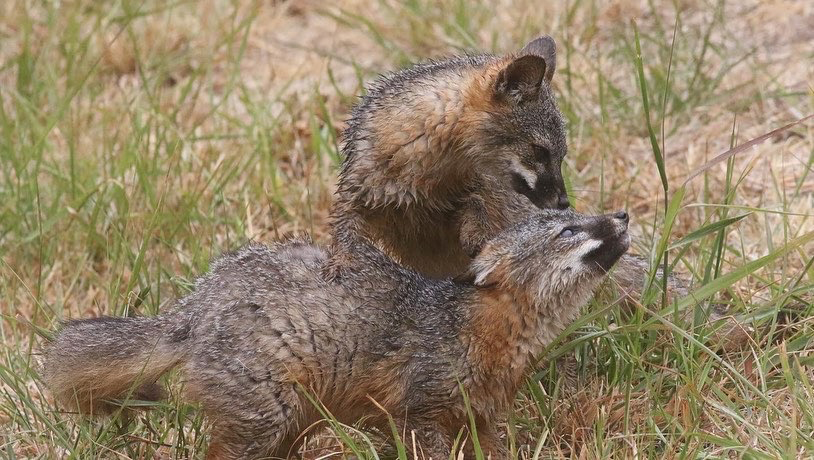
A pair of island foxes after a winter rain shower. Photo by Chuck Graham.
The Swiftest Recovery
A four-pronged effort ensued. From 2002 – 2006, 12 bald eaglets per year were released on Santa Cruz Island. Forty-three golden eagles were trapped and released back to northeastern California. About 5,000 feral pigs were removed from Santa Cruz Island. That project began in the fall of 2006 and finished in the spring of 2008.
The island fox populations on each island were at critical lows. There were less than 100 foxes on Santa Cruz, and only 15 foxes each remained on Santa Rosa and San Miguel Islands. Captive breeding of island foxes began in 1999 on all three islands. After several years, the steadfast efforts by the NPS, TNC, and IWS culminated in the successful recovery of bald eagles and island foxes across the chain.
By 2016, the island fox was removed from the Endangered Species List. It was the swiftest recovery of a terrestrial mammal in the history of the Endangered Species Act. The Channel Islands National Park is a shining example of multiple agencies coming together to reach a common goal of returning a natural balance to one of the most unique ecosystems in the world.
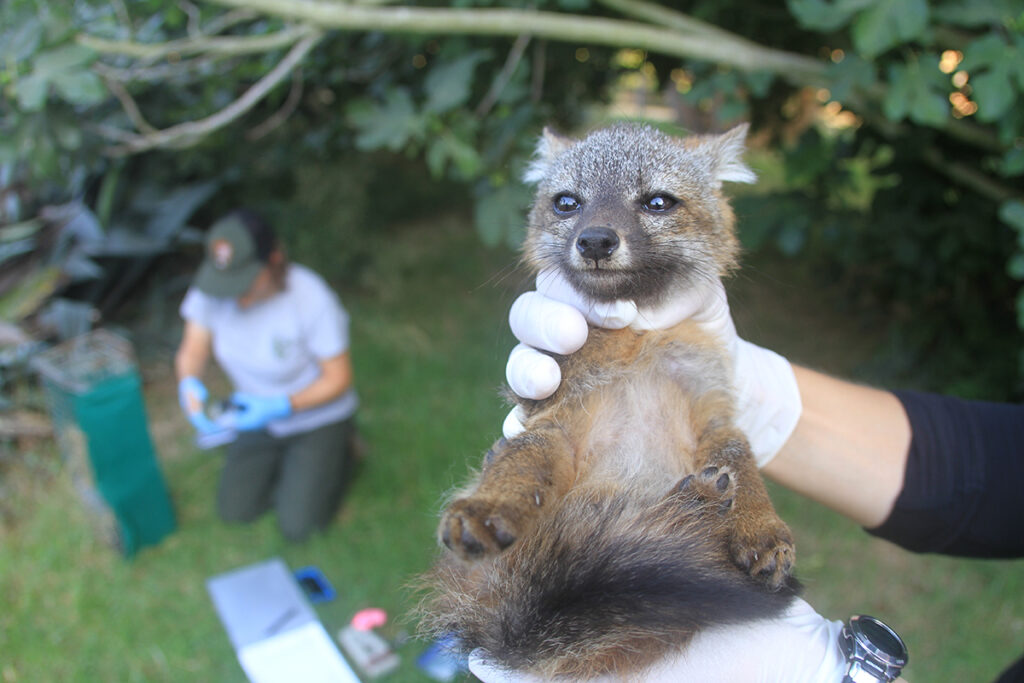
Once close to extinction, island foxes now thrive on the Channel Islands thanks to coordinated restoration efforts. Photo by Chuck Graham.
Island Fox Facts
Today, island foxes are thriving. On Santa Cruz and Santa Rosa Islands, there are well over 2,000 foxes on each island. On smaller San Miguel Island about 250 foxes enjoy that remote, windswept isle.
Visitors are virtually guaranteed of seeing them once they disembark the Island Packers ferry at Scorpion Anchorage on the southeast end of Santa Cruz Island. Watch the foxes foraging for food on a short jaunt up Scorpion Canyon or hike the sweeping marine terraces above overlooking the shimmering Santa Barbara Channel.
The largest land predator on the island is omnivorous, but it’s also the smallest fox species in North America. The island fox is the cousin of the mainland gray fox. They didn’t swim to what was then the big island known as Santarosae (before sea levels rose and created the Northern Chain) but were transported over either on storm debris during floods, or the Chumash Indians who paddled them over in their dugout canoes, also known as tomols. In fact, the Chumash kept foxes as pets.
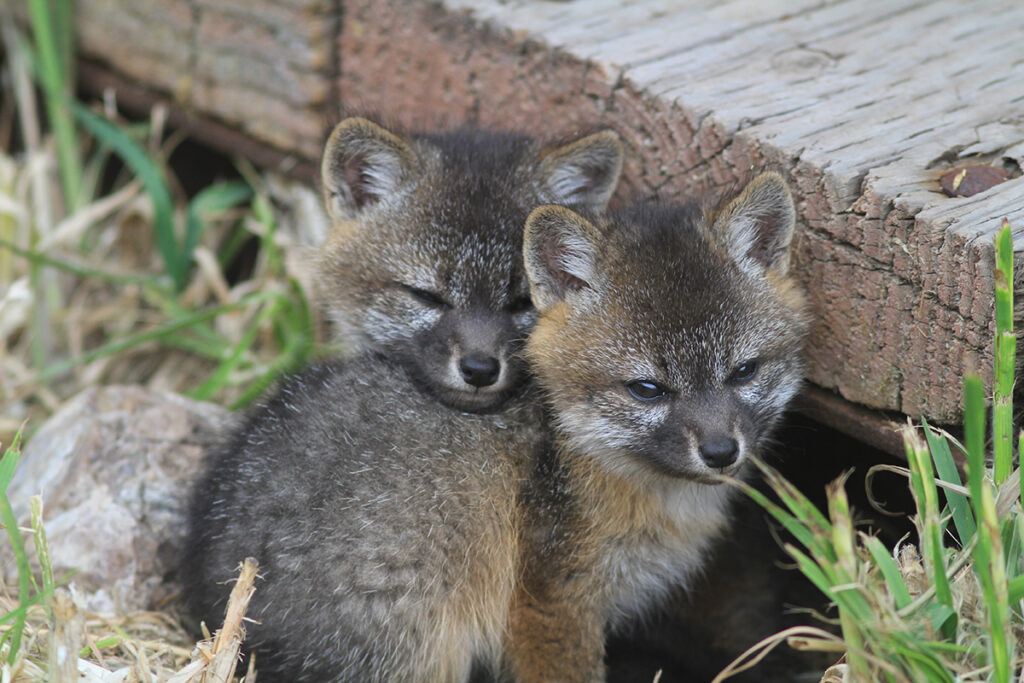
A couple of adorable newborn island pups. Photo by Chuck Graham.
May and June are also a time to spot adorable island fox pups. Visitors are not guaranteed of seeing pups, but since 2017 there have been several island fox families spotted in Scorpion Canyon. Some of the Santa Barbara Adventure Company kayak guides have been fortunate to witness the rearing of pups throughout the canyon.
Seeing adult island foxes with their pups is one of the many joys of the Channel Islands National Park and a great reminder of a conservation success story.
Blog contributed by:
Chuck Graham


